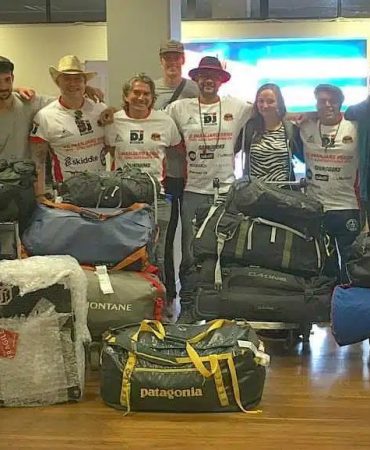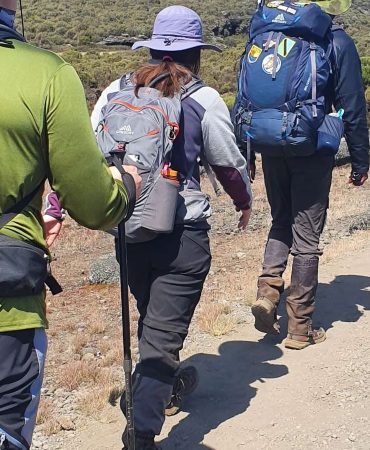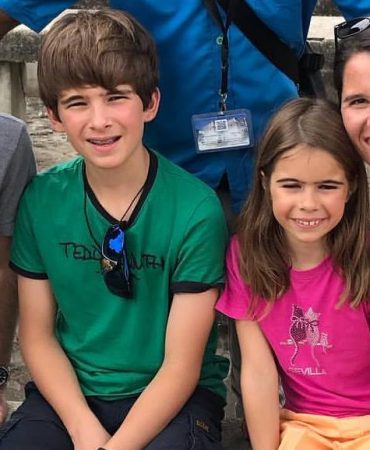Hiking Kilimanjaro: Conquer the Epic Peak in 7 Days! – EAST
fromHiking Kilimanjaro: Embark on a 7-day adventure hiking Kilimanjaro. Conquer Africa’s tallest peak with expert guides for an unforgettable experience.
Hiking Kilimanjaro Lemosho 7 Days
Introduction
Hiking Kilimanjaro Lemosho 7 Days offers the ultimate adventure for thrill-seekers and nature lovers alike. Mount Kilimanjaro, the highest peak in Africa, stands as a beacon for adventurers worldwide. The Lemosho route is particularly renowned for its stunning scenery and high success rate.
Geographical Information
Where is Mount Kilimanjaro on the Map?
Mount Kilimanjaro is located in northeastern Tanzania, close to the Kenyan border. It stands isolated on the African plains, offering a magnificent sight.
Where is Mount Kilimanjaro on a Map of Africa?
On a map of Africa, Kilimanjaro is found in the eastern part of the continent, slightly below the equator.
Where is Mount Kilimanjaro Map?
Detailed maps of Mount Kilimanjaro highlight its three volcanic cones: Kibo, Mawenzi, and Shira.
Where is Mount Kilimanjaro Located on the Africa Map?
Mount Kilimanjaro is situated in the Kilimanjaro Region of Tanzania, near the town of Moshi.
Mount Kilimanjaro World Map
On the world map, Mount Kilimanjaro is positioned in the Eastern Hemisphere, in the continent of Africa.
Mount Kilimanjaro on World Map
Kilimanjaro is one of the Seven Summits, the highest mountains on each of the seven continents.
Mount Kilimanjaro on the Map
The mountain’s exact coordinates are approximately 3.0674° S latitude and 37.3556° E longitude.
Cultural Insights
Local Customs
The Chagga people, the local inhabitants, have a rich cultural heritage and are known for their hospitality towards climbers.
Cuisine
Local cuisine includes dishes like “nyama choma” (grilled meat) and “ugali” (maize porridge), offering a taste of Tanzanian flavors.
Traditions
Traditional dances and music play a significant role in the cultural fabric of the Kilimanjaro region.
Must-Visit Attractions
Summit of Uhuru Peak
The ultimate goal for climbers, offering breathtaking views and a sense of accomplishment.
Shira Plateau
A beautiful highland zone offering panoramic views and unique flora.
Lava Tower
A striking volcanic formation that is a popular acclimatization point.
Activities and Experiences
Trekking
The primary activity, with various routes offering different experiences.
Wildlife Watching
Spotting animals like elephants, leopards, and buffaloes in the lower forests.
Photography
Capturing the stunning landscapes and unique wildlife.
Travel Tips
Accommodation
Various options from budget lodges to luxury hotels in Moshi.
Transport
Local buses, taxis, and shuttle services are available to reach the trailheads.
Packing Essentials
Warm clothing, sturdy hiking boots, and a good quality sleeping bag are crucial.
Safety and Health Precautions
Altitude Sickness
Acclimatization is key; consider taking Diamox and follow a slow ascent.
Vaccinations
Ensure vaccinations for yellow fever, typhoid, and hepatitis are up to date.
Hydration
Drink plenty of water to stay hydrated and avoid altitude sickness.
Budget Planning
Cost of the Trek
The cost varies, but budget around $2,000 to $3,000 for a guided tour.
Saving Tips
Book in advance, travel in groups, and choose budget-friendly tour operators.
Local Cuisine
Must-Try Food
Savor local dishes such as “ndizi na nyama” (bananas with meat) and “chapati” (flatbread).
Drinks
Try “Kilimanjaro” beer and local coffee grown on the slopes of the mountain.
Conclusion
Hiking Kilimanjaro Lemosho 7 Days offers an unparalleled adventure experience. From its diverse ecosystems to its cultural richness, it is a journey that promises memories of a lifetime. Plan well, prepare adequately, and embrace the challenge of conquering Africa’s highest peak.
-
Reviews 0 Reviews0/5
-
Vacation Style Holiday Type
-
Activity Level Challenging
-
1-16
Hiking Kilimanjaro transcends the ordinary, offering not just trails but a canvas of memories waiting to be painted. Explore, conquer, and redefine joy with these 5 epic trails that promise an unforgettable adventure amidst the grandeur of Kilimanjaro.
Embarking on the Mount Kilimanjaro trek via the Lemosho Route is an exciting journey, and you’ll be well taken care of with this package. The price includes various components to ensure a smooth and enjoyable adventure:
- Park Entry Fees: Grants you access to the natural beauty and wonders of Kilimanjaro.
- Camping Fees: Accommodations during the trek, immersing you in the stunning landscapes.
- Transportation: Convenient transport to and from the Kilimanjaro gate, so you can focus on the climb.
- Team Kilimanjaro Rescue Fees (18%): Ensures you have a safety net in case of any unforeseen circumstances.
- VAT on Tour Fees: Transparent pricing with included value-added tax.
- Professional Mountain Guides, Cooks, and Porters: A skilled and friendly team to assist you throughout the journey.
- 3 Hot Meals Daily: Keeping you energized with delicious meals during the trek.
- Treated and Filtered Drinking Water: Hydration is key, and you’ll have access to clean water throughout.
- Hot Water for Washing: Comfort and cleanliness even in the mountainous terrain.
- Fair Wages for the Mountain Crew: Supporting the hardworking individuals making your adventure possible.
- Kilimanjaro Association of Tour Operators (KIATO) Government Taxes: Complying with regulations and contributing to sustainable tourism.
- Oximeter: Monitoring oxygen levels for your safety at higher altitudes.
- Emergency First-Aid Kit: Preparedness for any medical needs that may arise.
- Visa – MasterCard (3.5%): Convenient payment options for a hassle-free experience.
- Sleeping mattress; Quality mess tents with tables and chairs Emergency first-aid kit
With all these inclusions, you’re set for an unforgettable journey up the majestic Mount Kilimanjaro. Any specific details you’re curious about or need more info on?
Got it! Here are the aspects not covered in the Mount Kilimanjaro trekking package:
- Airfare: Your journey to and from Kilimanjaro is an extra consideration to plan for.
- Tips: While the crew is well taken care of, tips for porters, guides, cooks, and assistant guides are not included.
- Flights: Separate from the transportation to the Kilimanjaro gate, your personal flights aren’t part of the package.
- Hotels in Kilimanjaro/Arusha: Accommodations outside the trek duration require separate arrangements and expenses.
- Transfer from Arusha to Kilimanjaro: Transportation between these locations is an additional arrangement to be made.
- Airport Transfer Round Trip: Pickup from Kilimanjaro International Airport (JRO) to the hotel in Kilimanjaro and return transfer from the hotel to JRO.
- Hotel Upgrade Costs: Any preference for alternative hotels beyond the standard ones will have additional costs.
- Non-essential Items: Personal choices like alcohol, beverages, cigarettes, snacks, etc., fall outside the package.
These exclusions provide flexibility for personal preferences and choices during your Kilimanjaro adventure. Anything specific you’re considering or need assistance with regarding these aspects?
A: The optimal time is during the dry seasons, either from January to March or June to October, ensuring stable weather conditions.
A: While some trails are more challenging, there are options suitable for beginners with proper preparation and guidance.
A: Take it slow, stay hydrated, and spend extra days on the mountain for acclimatization to minimize altitude-related issues.
A: Yes, camping is part of the adventure. Each trail offers unique campsites with stunning views.
A: While there’s no strict age limit, hikers should be physically fit and able to endure the challenges of high-altitude trekking.
A: Proper hiking boots, layered clothing, a reliable backpack, and essential gear like trekking poles are crucial for a successful Kilimanjaro adventure.
-
 Joining Group Marangu Route: Top 7-Day Trek Offers - EAST
Joining Group Marangu Route: Top 7-Day Trek Offers - EAST
Joining Group Marangu Route: Top 7-Day Trek Offers - EAST
Joining Group Marangu Route: Top 7-Day Trek Offers - EAST
-
 Marangu Route 5 Days Itinerary: Epic Kilimanjaro Trek - EAST
Marangu Route 5 Days Itinerary: Epic Kilimanjaro Trek - EAST
Marangu Route 5 Days Itinerary: Epic Kilimanjaro Trek - EAST
Marangu Route 5 Days Itinerary: Epic Kilimanjaro Trek - EAST
-
 Rongai Route Kilimanjaro: Epic 6-Day Climb Deal - EAST
Rongai Route Kilimanjaro: Epic 6-Day Climb Deal - EAST
Rongai Route Kilimanjaro: Epic 6-Day Climb Deal - EAST
Rongai Route Kilimanjaro: Epic 6-Day Climb Deal - EAST
-
 Rongai Route Kilimanjaro: Epic 6-Day Climb Deal - EAST
Rongai Route Kilimanjaro: Epic 6-Day Climb Deal - EAST
Rongai Route Kilimanjaro: Epic 6-Day Climb Deal - EAST
Rongai Route Kilimanjaro: Epic 6-Day Climb Deal - EAST
-
 Rongai Route Kilimanjaro: Epic 6-Day Climb Deal - EAST
Rongai Route Kilimanjaro: Epic 6-Day Climb Deal - EAST
Rongai Route Kilimanjaro: Epic 6-Day Climb Deal - EAST
Rongai Route Kilimanjaro: Epic 6-Day Climb Deal - EAST










